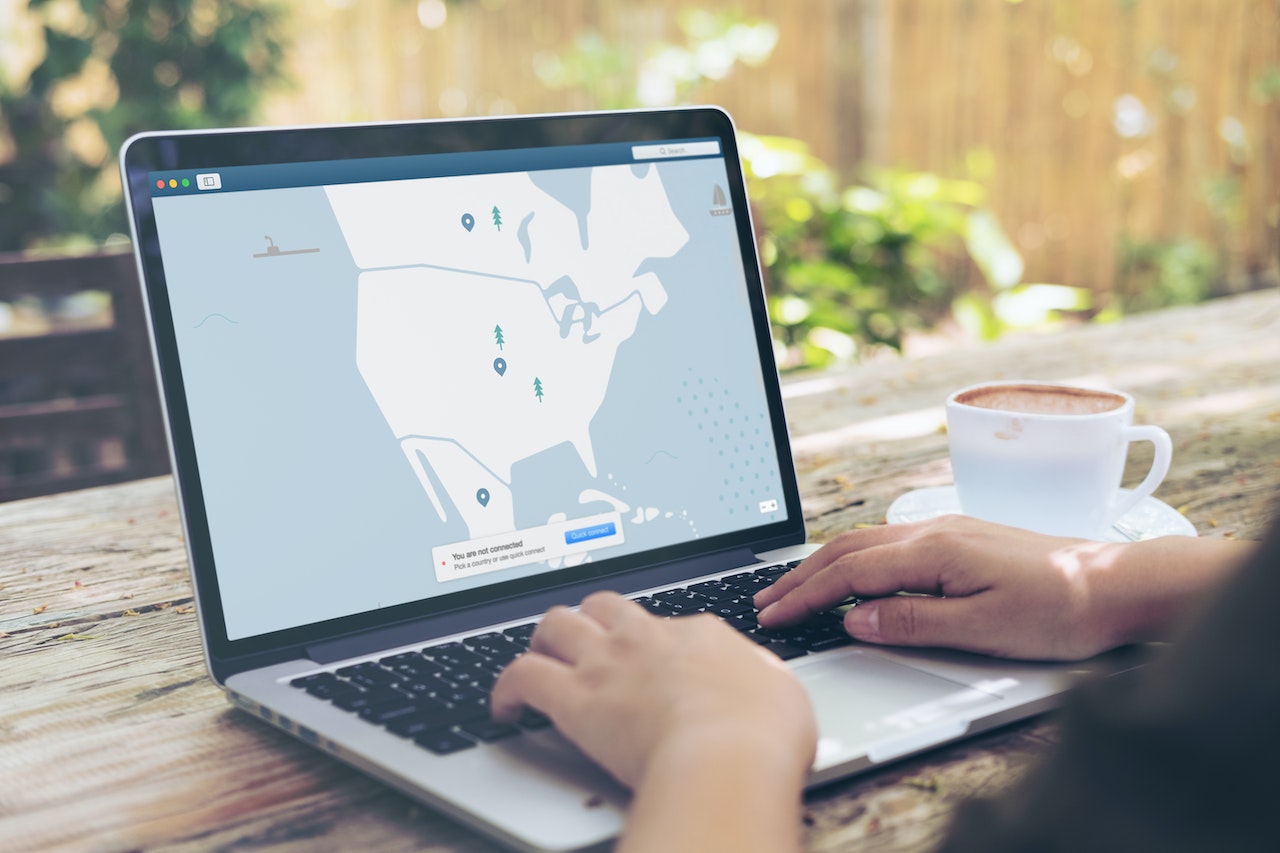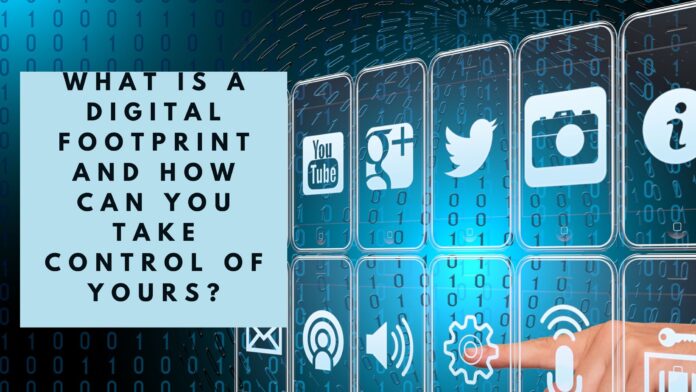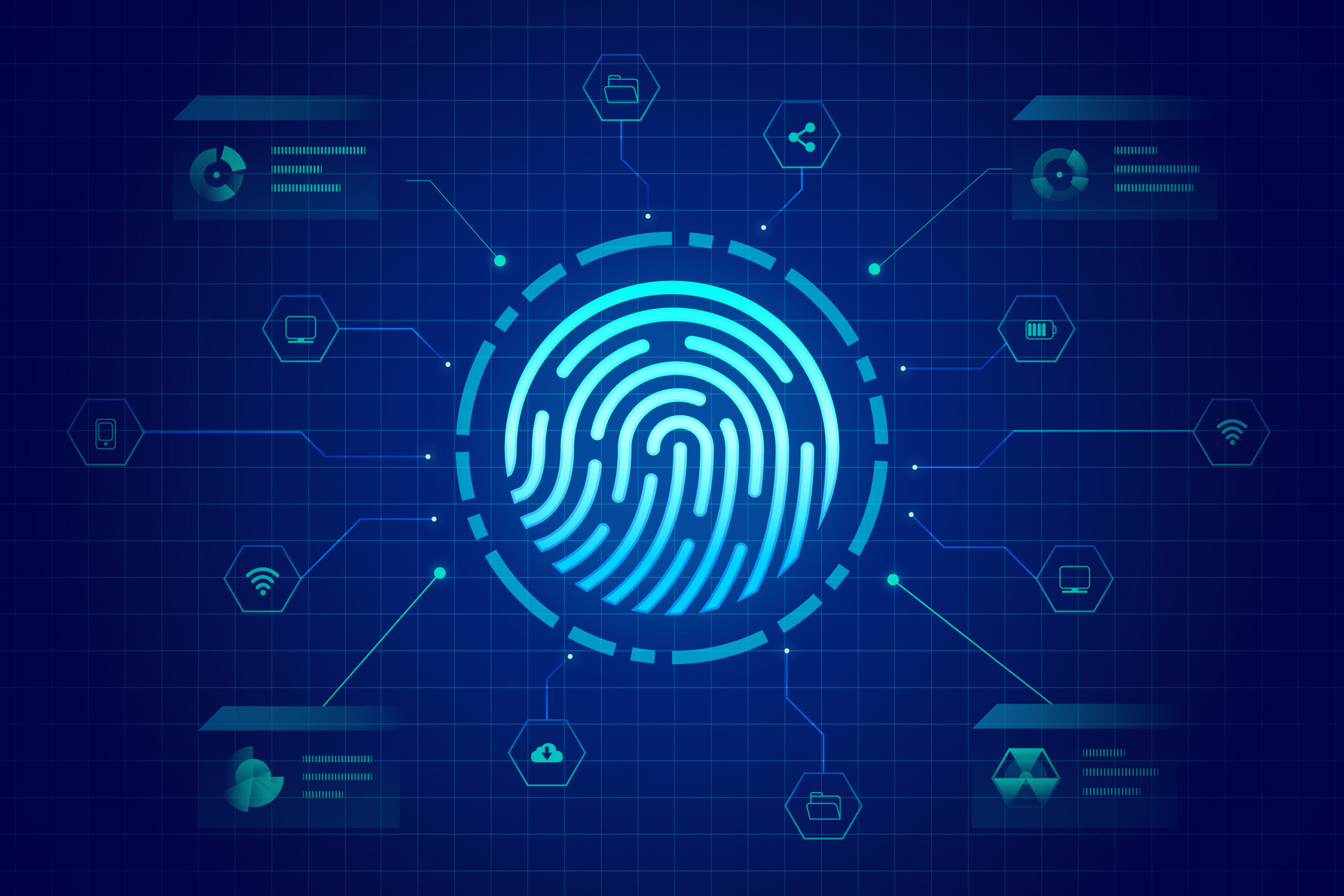In today’s digital age, our online activities leave behind a trail of data known as our digital footprint. This collection of information, ranging from social media posts to online purchases, can significantly impact our lives.
Employers, universities, and cybercriminals can analyze our digital footprints to form opinions, make decisions, and exploit our personal information. It is crucial to understand a digital footprint, why it matters, and how we can take control of it.
This comprehensive guide will explore the definition of a digital footprint, discuss its importance, provide practical examples, and offer actionable steps to manage and protect it.
Table of Contents
Understanding the Digital Footprint
What is a Digital Footprint?

A digital footprint refers to the trail of data individuals leave behind while engaging in various online activities.
It encompasses a wide range of information, including websites visited, emails sent, social media posts, online purchases, and even passive data collection through cookies and website tracking.
Our digital footprint is a virtual representation of our online presence, actions, and behaviours. It can be classified into two main categories: active and passive.
Active Digital Footprint
An active digital footprint consists of the intentional data that individuals create and share online. This includes social media posts, comments, likes, shares, and any information voluntarily provided through online forms or registrations.
Active digital footprints directly result from our deliberate actions and choices in the digital realm. As a business, it is vital that your digital footprint is kept in check to stay compliant. Certain tools such as an office SDK keeps data where it should be and allows full collaboration without data even leaving your platform.
Passive Digital Footprint
A passive digital footprint, on the other hand, is generated without our explicit consent or awareness. It involves collecting data about us through websites, apps, and online services.
 Examples include tracking cookies, IP addresses, location data, and online behavioural profiling. Passive digital footprints are often created through background processes and hidden data collection mechanisms.
Examples include tracking cookies, IP addresses, location data, and online behavioural profiling. Passive digital footprints are often created through background processes and hidden data collection mechanisms.
READ ALSO: The Ultimate Social Media Security Guide for Individuals and Businesses
The Importance of Managing Your Digital Footprint
Why Are Digital Footprints Important?
Understanding the importance of managing our digital footprints is crucial in today’s interconnected world. Here are several key reasons why digital footprints matter:
- Online Reputation: Our digital footprints contribute to our online reputation, which can have significant implications in both personal and professional spheres. Employers, colleges, and even potential partners may evaluate our online presence to form judgments and make decisions.
- Employment and Education: Employers and educational institutions increasingly rely on digital footprints to vet candidates. What we post online can influence hiring decisions, college admissions, and scholarship opportunities.
- Privacy and Security: Digital footprints can expose personal information, making us vulnerable to identity theft, cyberattacks, and online scams. Managing our digital footprints is essential for safeguarding our privacy and protecting ourselves from malicious actors.
- Online Targeting: Companies and advertisers leverage digital footprints to target individuals with personalized ads and content. By managing our footprints, we can control the information we receive and reduce exposure to unwanted marketing strategies.

- Controlled Narrative: By actively managing our digital footprints, we can shape our online narrative and present ourselves in the best possible light. It allows us to highlight our achievements, skills, and interests while minimizing the risk of misinterpretation.
- Data Exploitation: Digital footprints generate valuable data companies can exploit for profit. By taking control of our footprints, we can limit how much data brokers and tech giants collect, use, and sell our personal information.
Examples of Digital Footprints
To better grasp the concept of digital footprints and how they can manifest in our online lives, let’s explore some common examples across various activities:
1. Social Media Presence
Your social media accounts, such as Facebook, Twitter, Instagram, or LinkedIn, contribute significantly to your digital footprint. Every post, comment, like, and share forms part of your digital footprint.
These activities reflect your interests, opinions, and online interactions. Additionally, the information in your profile, such as your education, employment history, and location, adds to your digital footprint.

2. Online Shopping
Engaging in online shopping leaves a digital trail. Every purchase, from clothing to electronics, contributes to your digital footprint.
E-commerce websites collect data about your preferences, purchase history, and payment information. This data can personalize recommendations and target you with tailored advertisements.
3. Financial Transactions
Online banking, investments, and financial management activities also impact your digital footprint. Whether you’re applying for a credit card, buying stocks, or subscribing to financial newsletters, these actions generate data that becomes part of your digital footprint.
It’s essential to be mindful of the security measures to protect sensitive information when conducting financial transactions online.
READ ALSO: Ultimate Digital Privacy Guide
4. Health and Fitness Tracking
Fitness trackers, health apps, or online healthcare services can contribute to your digital footprint. These technologies collect data about your physical activities, sleep patterns, and medical history.

While they can provide valuable insights and support, it’s essential to consider the privacy implications and ensure your health information is adequately protected.
5. News and Content Consumption
Reading news articles, subscribing to newsletters, and engaging with online content can shape your digital footprint. Websites and media platforms track the articles you read, the topics you’re interested in, and the types of content you engage with. This data is then used to personalize your news feed and suggest related content.
6. Online Communication
Emails, messaging apps, and online forums contribute to your digital footprint. The information you exchange in these channels, including personal conversations, attachments, and shared documents, becomes part of your digital trail.
Using secure communication methods and being cautious about sharing sensitive information online is essential.
These examples highlight how various online activities contribute to our digital footprints. By actively managing and controlling our digital footprints, we can shape our online identities, protect our privacy, and mitigate potential risks.
READ ALSO: Ultimate Digital Privacy Guide: Protect Your Data Today
Taking Control of Your Digital Footprint
Now that we understand the definition and importance of digital footprints let’s explore practical steps to take control of our digital presence and protect our privacy.

1. Use Privacy-Enhancing Tools
- Consider using privacy-enhancing tools and services to protect your digital footprint further. VPNs (Virtual Private Networks) can encrypt your internet connection, making it more difficult for others to track your online activities. Tools like Incogni can help you take control of your personal information and limit its exploitation by data brokers and tech giants.
- Use a privacy-respecting browser like Opera or Firefox (definitely avoid Chrome, Edge, and other browsers known to track users).
- Use a privacy-focused email service like ProtonMail or Tutanota.
- Use a password manager to create and store strong, unique passwords for all your online accounts.
- Use a firewall and antivirus software to protect your devices from malware.
2. Review Privacy Settings
- Regularly review and update the privacy settings on your social media accounts and other online platforms. Familiarize yourself with the available options to control who can access your posts, personal information, and online activities. Customize your settings to align with your desired level of privacy.
- Opt out of data tracking whenever possible. Most websites and services allow you to opt out of data tracking by checking a box or clicking a button.
- Be mindful of the information you share online. Before posting or sharing anything, consider who might have access to it and how it could be used.
READ ALSO: Managing Your Online Presence for Safety and Success
3. Minimize Online Footprint
- Delete or deactivate old accounts and profiles that you no longer use. Removing unnecessary accounts reduces the amount of personal information available online and minimizes the risk of data breaches.

- Use a pseudonym or nickname when signing up for new accounts or services. This can help to protect your privacy and make it more difficult for people to track you online.
- Be careful about the personal information you share online. Only share information that you are comfortable with being public.
4. Educate Yourself About Privacy
- Stay informed about evolving privacy practices, regulations, and potential threats.
- Educate yourself about privacy best practices and be cautious when sharing personal information online.
- Regularly review privacy policies and terms of service to understand how your data is collected, used, and shared.

5. Practice Digital Hygiene
- Back up your data regularly. This will help to protect your data in case of a data breach or other incident.
- Avoid suspicious links and downloads. These can be used to spread malware or track your online activity.
- Be cautious about the information you share with unknown or untrusted sources.
- Report any suspicious activities or potential privacy breaches to the appropriate authorities.
By implementing these steps and being mindful of your online activities, you can regain control over your digital footprint, protect your privacy, and shape your online presence to align with your values and goals.
Additional Tips
- Use a burner or virtual phone number like Hushed for online transactions and other activities where you don’t want to use your actual phone number.

- Use a public Wi-Fi network only when necessary, and use a VPN to protect your privacy. Recommended VPN solutions include Surfshark VPN, CyberGhost VPN, Ivacy, PIA VPN, Proton VPN, and other best VPNs.
- Be careful about what apps you install on your devices, and only install apps from trusted sources.
- Use Surfshark Alternative ID to create an anonymous digital identity.
- Use the Reship Virtual Address to receive physical packages without using your actual house address.
- Keep your software up to date with the latest security patches.
By implementing these steps and being mindful of your online activities, you can regain control over your digital footprint, protect your privacy, and shape your online presence to align with your values and goals.
Conclusion
In an increasingly interconnected world, managing our digital footprints is crucial. Understanding what a digital footprint is, why it matters, and how to control it empowers us to protect our privacy, safeguard our reputation, and mitigate potential risks.
By conducting regular audits, reviewing privacy settings, and practising good digital hygiene, we can confidently navigate the digital landscape and ensure that our digital footprints reflect the best versions of ourselves.
Remember, your digital footprint reflects your online identity and activities. Taking control of it allows you to shape your narrative, protect your privacy, and maintain control over your personal information in an ever-evolving digital world.
INTERESTING POSTS
About the Author:
Christian Schmitz is a professional journalist and editor at SecureBlitz.com. He has a keen eye for the ever-changing cybersecurity industry and is passionate about spreading awareness of the industry's latest trends. Before joining SecureBlitz, Christian worked as a journalist for a local community newspaper in Nuremberg. Through his years of experience, Christian has developed a sharp eye for detail, an acute understanding of the cybersecurity industry, and an unwavering commitment to delivering accurate and up-to-date information.








